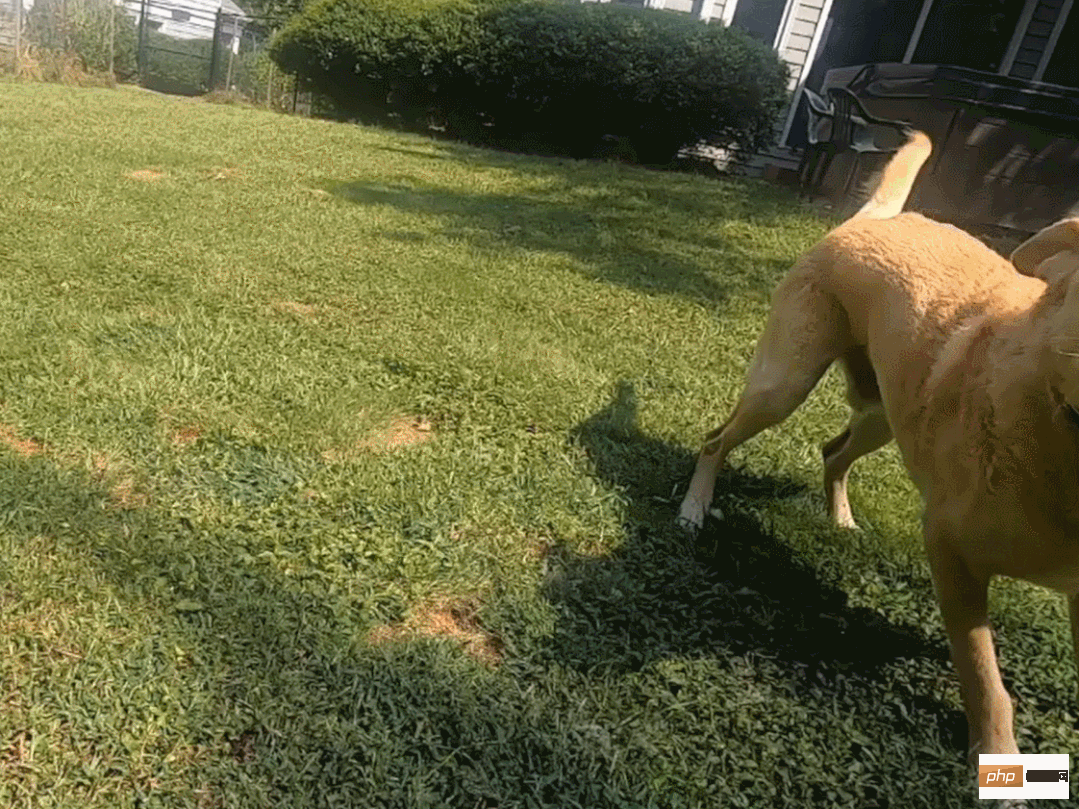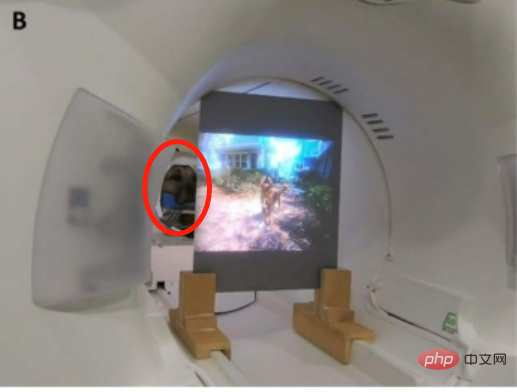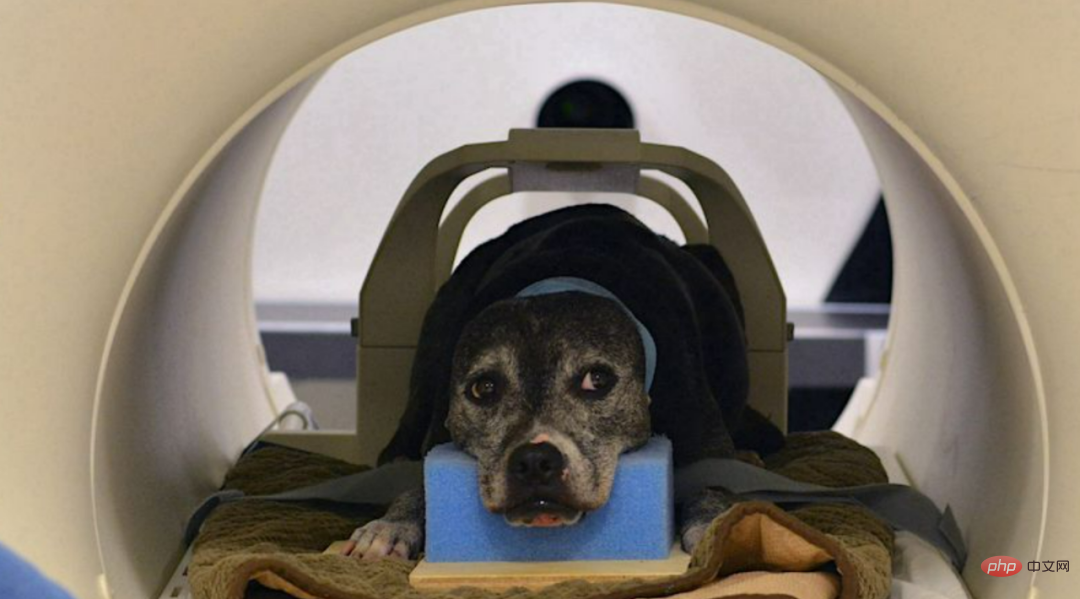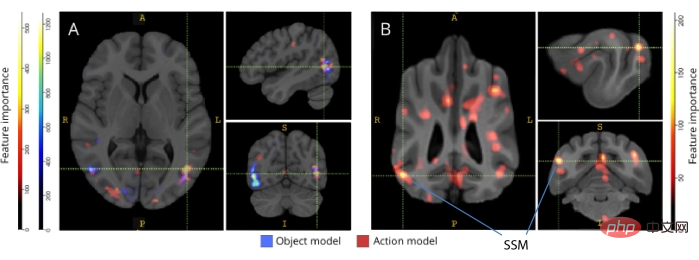Home >Technology peripherals >AI >How do dogs see the world? Human researchers set out to decode visual cognition in dog brains
How do dogs see the world? Human researchers set out to decode visual cognition in dog brains
- PHPzforward
- 2023-04-11 19:27:17819browse
Over the past 15,000 years, dogs and humans have co-evolved. Nowadays, dogs often live in human environments as pets. Sometimes dogs watch videos at home like people do, and seem to understand.
So, what does the world look like in the eyes of dogs?
Recently, a study from Emory University decoded visual images from the brains of dogs, revealing for the first time how the dog's brain reconstructs what it sees. The research was published in the Journal of Visualized Experiments.

Paper address: https://www.jove.com/t/64442/through-dog-s-eyes-fmri-decoding-naturalistic-videos -from-dog
The researchers recorded fMRI neural data from two awake, unrestrained dogs while they watched 30-minute videos on three separate occasions for a total of 90 minutes. They then used machine learning algorithms to analyze patterns in the neural data.
Gregory Berns, a professor of psychology at Emory University and one of the authors of the paper, said: "We can monitor the dog's brain activity while it watches the video and reconstruct to some extent what it is looking at. . It’s remarkable that we were able to do this.”
Berns and colleagues pioneered the use of fMRI scanning technology in dogs and trained the dogs to remain completely still while measuring neural activity. Unrestricted. Ten years ago, the team published the first fMRI brain images of fully awake, unrestrained dogs, opening the door to what Berns calls "The Dog Project."

Berns and Callie, the first dog to have her brain activity scanned while fully awake and unrestrained.
Over the years, Berns’ lab has published multiple studies on how the canine brain processes vision, language, smells and rewards (such as receiving praise or food).
At the same time, machine learning technology continues to advance, allowing scientists to decode some of the patterns of human brain activity. Berns then began wondering whether similar technology could be applied to dog brains.
This new research is based on machine learning and fMRI technology. fMRI is a neuroimaging technique that uses magnetic resonance imaging to measure changes in hemodynamics caused by neuronal activity. This technology is non-invasive and plays an important role in the field of brain function localization. In addition to humans, the technology has only been used in a handful of other species, including some primates.
Research Introduction
Two dogs were used in the experiment. It proves that machine learning, fMRI and other technologies can be generally used for canine analysis. The researchers also hope that this Research helps others gain a deeper understanding of how different animals think.
The experimental process is roughly as follows:
Experimental participants: Bhubo, 4 years old; Daisy, 11 years old. Both dogs had previously participated in several fMRI training sessions (Bhubo: 8 sessions, Daisy: 11 sessions), some of which involved viewing visual stimuli projected onto a screen. The two dogs were chosen because they were able to stay inside the scanner for extended periods of time without moving around unseen by their owners.
Video shooting: Shoot videos from the dog's perspective to capture everyday scenes in the dog's life. These scenarios include walking, feeding, playing, interacting with humans, dog-to-dog interactions, etc. The video was edited into 256 unique scenes, each depicting an event such as a dog cuddling with a human, a dog running, or a walk. Each scene is assigned a unique number and label based on its content. The scenes were then edited into five larger compilation videos, each approximately 6 minutes long.

#Experimental design: Participants were first scanned using a 3T MRI while watching a compilation video projected onto a screen behind the MRI bore. For dogs, pre-training is achieved by placing their heads in custom-made chin rests to achieve a stable head position, like the one pictured below

The experiment is divided into three viewings, each time watching a 30-minute video, with a total duration of 90 minutes.
During the experiment, fMRI was used to scan the dog at the same time, and then the data was analyzed. The experiment used the Ivis machine learning algorithm, which is a nonlinear method based on twin neural networks (SNN). , has achieved success in analyzing high-dimensional biological data. In addition, machine learning algorithms such as scikit-learn and RFC were also used in the experiment.

Daisy, who is being scanned, has tape on her ears to hold earplugs in place to eliminate noise.
The study compared how the human and dog brains work. Results from two human subjects showed that a model developed using neural networks mapped brain data to object-based and action-based classifiers with 99% accuracy; the same model performed well when decoding dog brain patterns. Not applicable to object classifiers, while decoding dog action classification, accuracy reached 75% - 88%. This illustrates significant differences in how the human and dog brains work, as shown below in the experimental results for humans (A) and dogs (B). In this regard, Berns concluded: "We humans are very concerned about what we see, but dogs seem to care less about who they see or what they see, and more about the action behavior."

Interested readers can read the original text of the paper to learn more research details.
The above is the detailed content of How do dogs see the world? Human researchers set out to decode visual cognition in dog brains. For more information, please follow other related articles on the PHP Chinese website!
Related articles
See more- Technology trends to watch in 2023
- How Artificial Intelligence is Bringing New Everyday Work to Data Center Teams
- Can artificial intelligence or automation solve the problem of low energy efficiency in buildings?
- OpenAI co-founder interviewed by Huang Renxun: GPT-4's reasoning capabilities have not yet reached expectations
- Microsoft's Bing surpasses Google in search traffic thanks to OpenAI technology

